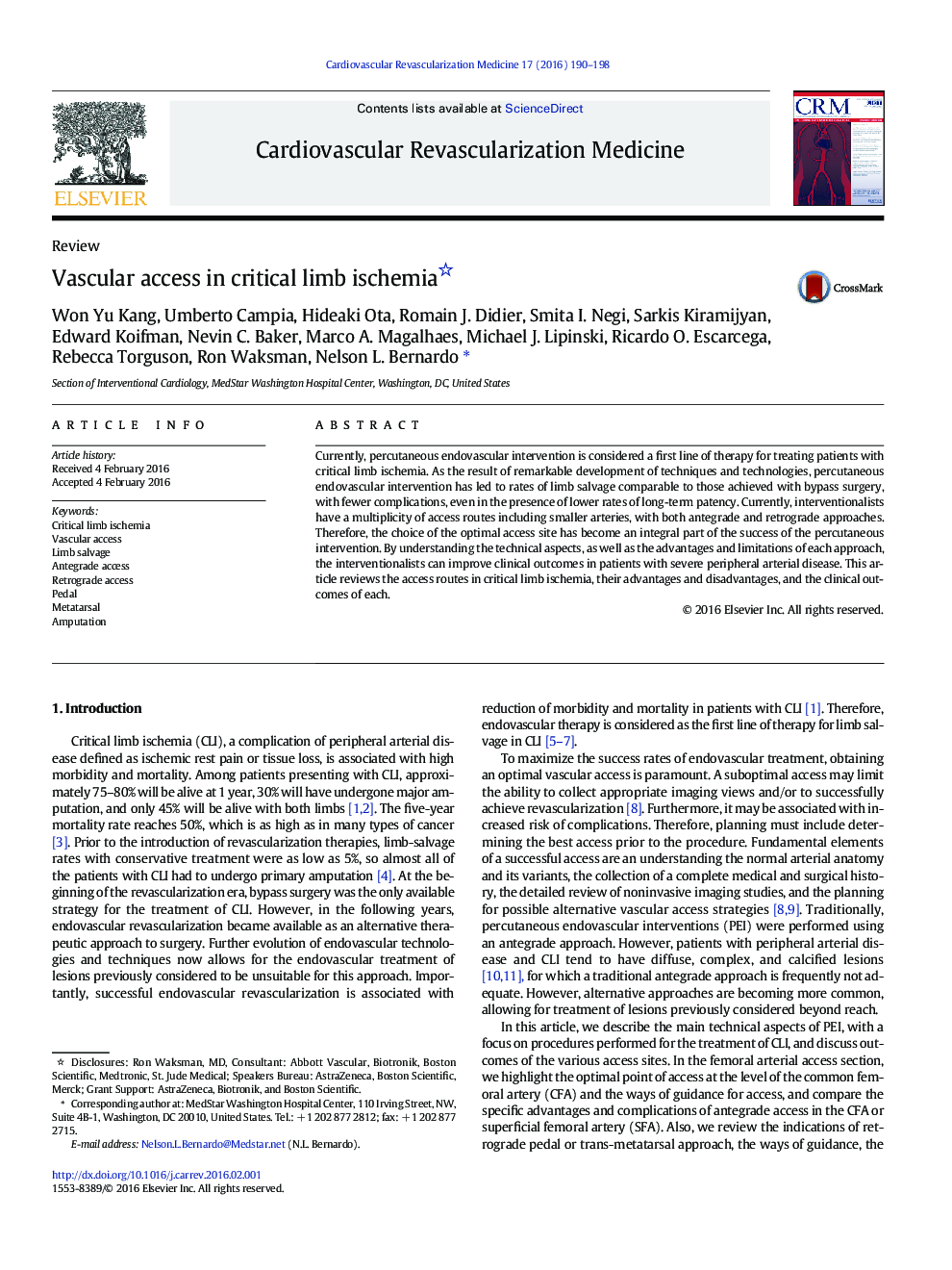| Article ID | Journal | Published Year | Pages | File Type |
|---|---|---|---|---|
| 5921084 | Cardiovascular Revascularization Medicine | 2016 | 9 Pages |
Currently, percutaneous endovascular intervention is considered a first line of therapy for treating patients with critical limb ischemia. As the result of remarkable development of techniques and technologies, percutaneous endovascular intervention has led to rates of limb salvage comparable to those achieved with bypass surgery, with fewer complications, even in the presence of lower rates of long-term patency. Currently, interventionalists have a multiplicity of access routes including smaller arteries, with both antegrade and retrograde approaches. Therefore, the choice of the optimal access site has become an integral part of the success of the percutaneous intervention. By understanding the technical aspects, as well as the advantages and limitations of each approach, the interventionalists can improve clinical outcomes in patients with severe peripheral arterial disease. This article reviews the access routes in critical limb ischemia, their advantages and disadvantages, and the clinical outcomes of each.
